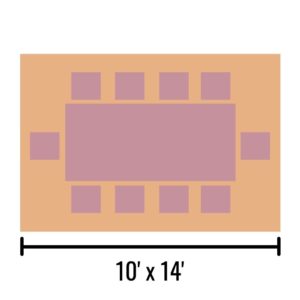Dining Room Rugs
Dining Room Persian Rugs and Oriental Rugs
A Persian rug in the dining room will instantly uplift the look of the room, adding beauty and elegance to an otherwise functional space.
Persian and Oriental rugs are often hand-woven with high-quality wool or silk, which can make them more durable and long-lasting than other types of rugs. This is important in a dining room where spills and stains may occur more frequently.
With the rug as a focal point in your dining room, you don’t need to add any other accessories to the room.
Watch our video for a helpful size guide on choosing the right size rug for your dining room table. And reach below for more tips.
Table of Contents
Bring color and enhance the cozy ambiance of your dining room with rugs. Persian and oriental rugs are hand-knotted with high-quality natural fibers like wool, cotton, or silk, making these materials durable and long-lasting.
Persian rugs in a dining room can create a cohesive and elegant look by harmoniously connecting the furniture with other design elements. By selecting a Persian rug that complements the color and style of your dining room furniture, you can create a balanced and harmonious atmosphere, enhancing the space’s overall aesthetic.
Additionally, a perfect dining room rug can elevate the sophistication and warmth of the dining room, making it a welcoming and comfortable place for family meals and gatherings.
Selecting the perfect rug for your dining room can be daunting, given the abundance of sizes, designs, and materials available. In this article, we’re here to help you navigate this process by recommending choosing the right size rug, designs, and materials to consider.
Let us guide you as you decide on this essential addition to your dining room and create an inviting and functional space.
Why Use Rugs in Dining Rooms
Placing a rug in the dining room is a fantastic touch. A rug under the dining table brightens up the room and gives it a cozy ambiance, which is what you want in a dining room.
A rug also highlights the rug and sets it apart from the other items in the room so it feels like a special warm and inviting space on its own instead of just another piece of furniture. If you have a wood floor, a rug can also protect the floor from scuffs and scratches.
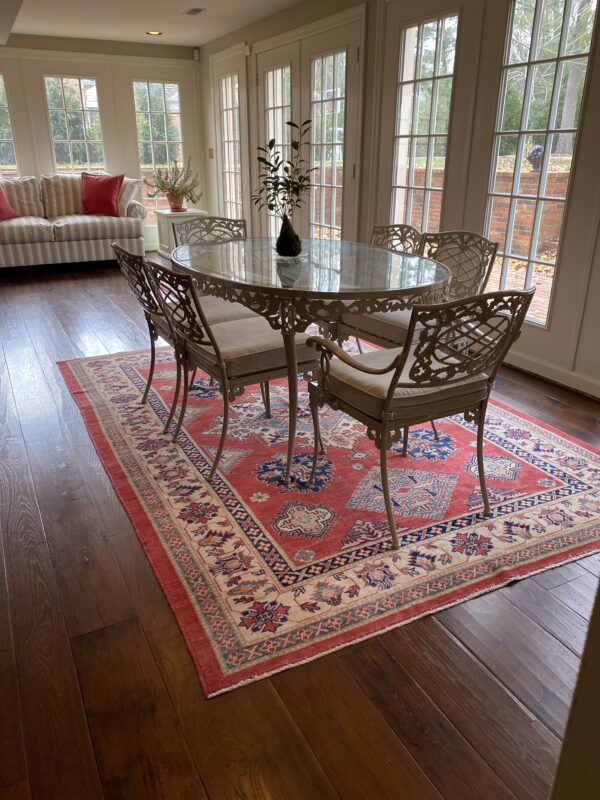
In most other rooms in your home, there is a fair amount of flexibility in terms of choosing a rug size. A lot depends on the look you are going for and the overall décor of the room. Choosing a rug size for the dining room is a slightly less flexible in that there are certain guidelines that you cannot ignore.
There’s one rule in particular that most important of all, in terms of safety and comfort. We’re going to focus on that one rule first.
The One Most Important Tip for Choosing the Right Rug Size for the Dining Room
Before buying an Oriental dining room rug, you must know how large it is in your room. The rug’s width ought to be proportional to the width of the dining table and, in some cases, somewhat larger to avoid the back leg separating from the rug.
Follow this general rule of thumb:
Ensure the rug width is at least the table width plus the length of two chairs, and the rug length is at least the table length plus the length of two chairs. This guarantees that when someone pulls back a chair to sit, the chair remains entirely on the rug.
When placing a rug in the dining room, the first and most important rule is to make sure that the front and back legs of all the dining chairs stay fully on the rug even when they are pulled back.
It’s not something that most people would automatically think about but imagine this. You buy a rug that’s just large enough for all the chairs to fit comfortably on when they are pushed in. This arrangement looks great when nobody is at the dining table but here’s why this size of rug is wrong.
When it’s time for dinner and you pull the chair back, the hind legs of the chair go off the rug. This creates a situation where the front and the back legs of the chair are at two different levels.
Sitting on a wobbly chair while eating can be painfully uncomfortable, and the thicker the pile of the rug, the more unsteady the chair will be.
Trying to push the chair back in can create another problem. The constant rubbing of the hind legs of the chair against the rug edge can cause the edges to fray, which can end up making the whole room look shabby.
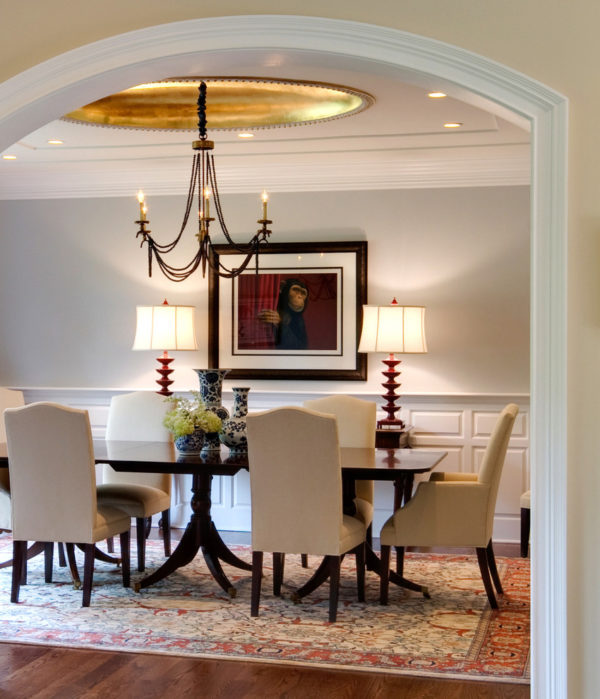
Which Rug Works for the Dining Room
Choose a rug with an elaborate border and corners as those are the only portions of the rug that will be visible. The rest of the rug will be under the table.
Choose a darker colored rug that will not show spills and stains so easily.
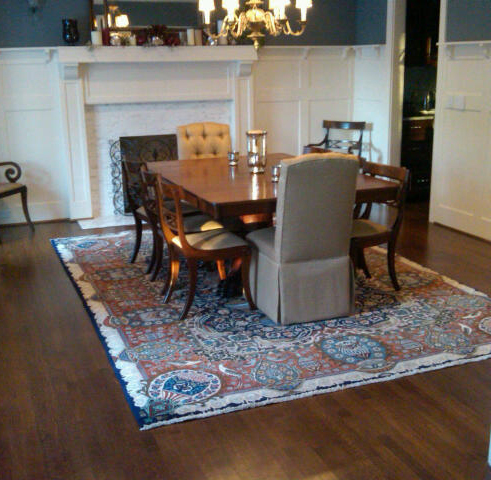
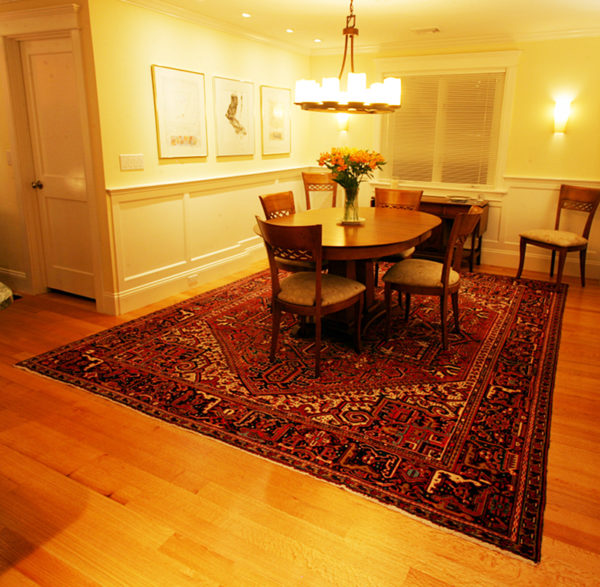
How to Measure a Rug for your Dining Room
Keeping that in mind, here’s the right way to measure a rug for your dining room.
- Measure the length and width of the table.
- Add the width of two chairs to each of these dimensions.
For Rectangular Dining Tables

1. Measure the length of the table + add width of 2 chairs to get the ideal rug length.
2. Measure the width of the table + add width of 2 chairs to get the ideal rug width.
For Round Dining Tables
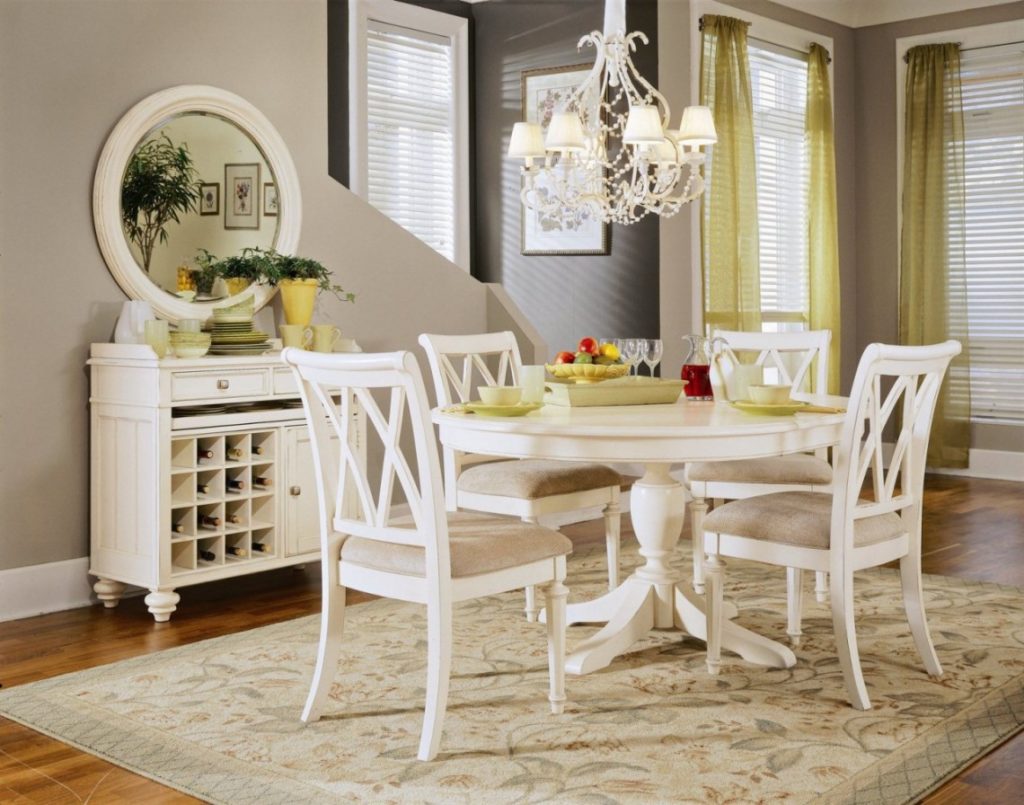
1. Measure the diameter of the table + add the width of 2 chairs to get the perfect rug size.
Using these measurements will help you determine the right size of rug to buy for your dining room. When in doubt, go with the slightly larger size.
Other Dining Room Rug Size Guidelines
In addition to the dining chair leg placement, there are a few other factors that you should take into consideration when purchasing a dining room rug.
Consider the shape of your dining table. A rug that is the same shape of the dining table gives the space a more cohesive look, especially for a rectangular or square dining table. For a round dining table, you can choose either a round or square rug.
If your dining table has leaves, open up the extensions before taking the measurements.
The placement of your dining table matters too. If it is in the center of the room, the edge of the rug should be at least 4” away from the walls. Leaving some bare space between the rug edge and the wall creates a more defined dining space. A rug that fits snugly across the room from one wall to the other can tend to make the room look stuffy.
Recommended Dining Room Rug Sizes
Consider rugs around 7 x 10 ft, 8 x 8 square rug, or 8 x 10 ft for a four-seater dining table. An 8 x 10 or 8 x 11 rug works well for a six-seater table, while a 9 x 12 one suits an eight-seater dining room table.
For larger tables, opt for a rectangular rug that is 10 x 13 or 10 x 14 for a 10-seater table and a 10 x 14 rug for a 12-seater dining room table.
Alternatively, base your decision on your dining room size and shape rather than the table size. Choose a rug size that leaves about 12 to 24 inches between the rug’s edge and the dining room wall. Too small rugs can make the space feel unbalanced and disjointed, cause discomfort and inconvenience when using the chairs, and lead to the rug shifting, bunching, or becoming damaged.
These recommended dining room rug sizes will give you a better of the approximate measurements to consider. These are general guidelines though.
The right size of rug for your dining room will depend on a combination of factors, including the size and shape of your dining table, the size of your dining room, and the other furniture in the room.
4 Seater Round Dining Table
A square rug measuring 8 x 8 feet or a round rug with a diameter of 8 feet will work best for a standard-sized round dining table with 4 chairs.
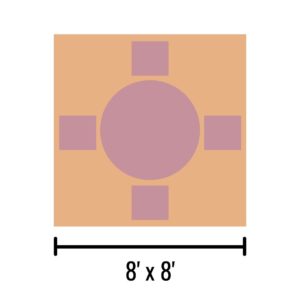
6 Seater Rectangular Dining Table
Look for a rectangular rug measuring a minimum 8′x10′.
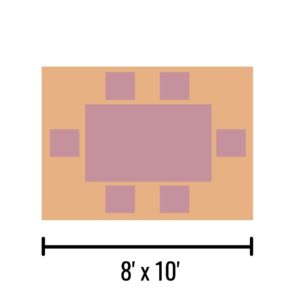

8 Seater Rectangular Dining Table
This calls for a larger rectangular rug of about 9 x 12 feet at the minimum.
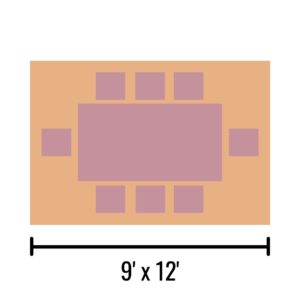
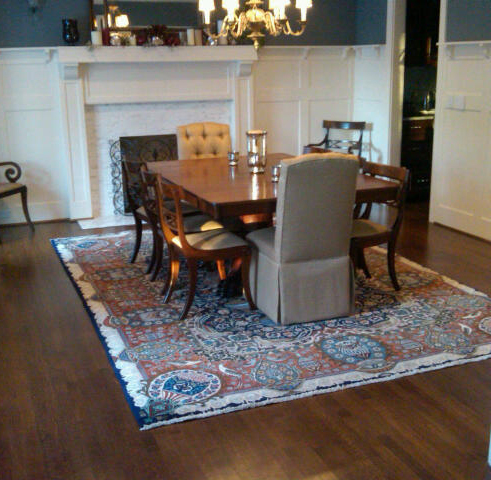
10 Seater Rectangular Dining Table
Can You Use Round Persian Rugs in the Dining Room
Select a round rug that harmonizes with your dining table, chairs, and other décor elements to decorate your dining room.
When choosing a round rug, pay attention to its size, ensuring it extends at least 24-30 inches beyond the edge of the table to accommodate chairs when pulled out. This will prevent the chairs from catching on the rug’s edges and maintain a comfortable dining experience.
A Note About Best Rug Styles for the Dining Room
When you place a rug under the dining table, most of the rug will remain hidden under the table. The only part of the rug that will be visible at all times is the border.
When purchasing a dining room rug, spend more time checking out rug styles that have eye-catching borders. Don’t focus on the body of the rug.
A border with bright, bold motifs can will give your dining room a colorful, casual look while a more elaborately patterned border will give the room a more elegant, sophisticated look. Both look equally good.
The right style for you will depend on the look you wish to create in your dining room.
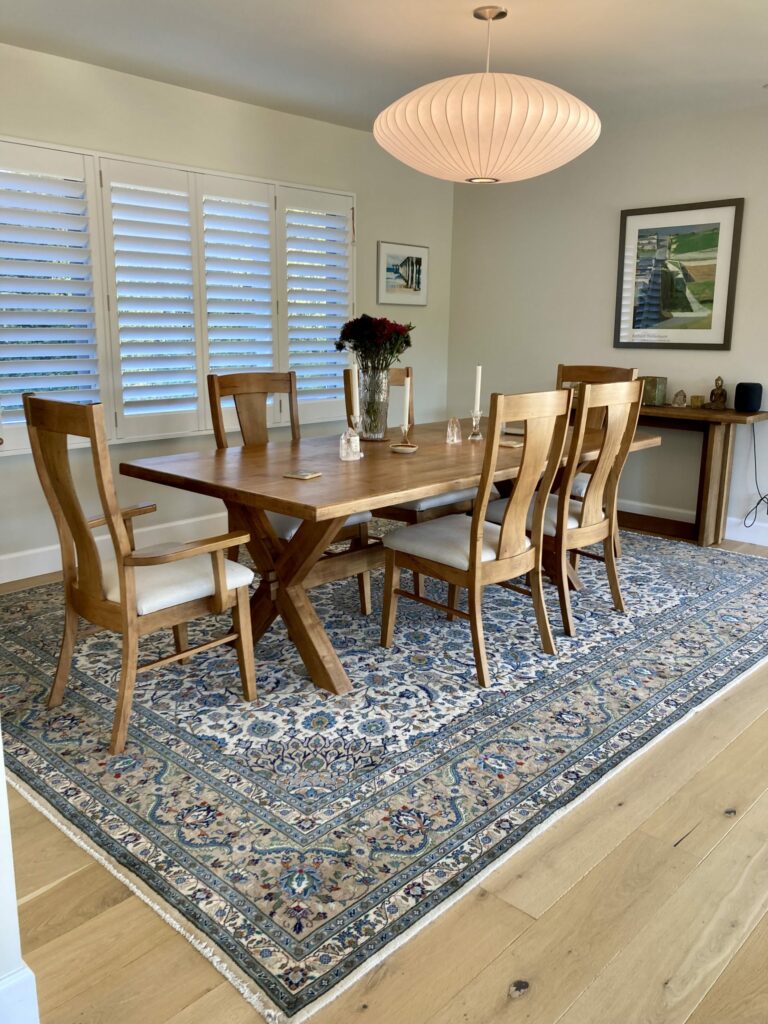
Material Selection for Dining Room: Wool, Silk, and More Tips
When you choose a Persian rug for your dining room, consider the material’s importance.
Natural fiber rugs like wool offer durability and stain resistance while naturally flame-resistant and moisture-repellent. These qualities make wool rugs perfect for withstanding spills and stains in this area. Besides practical advantages, wool provides a luxurious and comfortable feel underfoot.
Though wool is preferred for dining room rugs, some might find silk-highlighted or silk-piled rugs appealing. These rugs can be stunning, but remember that silk is a delicate material requiring more cautious maintenance and cleaning. Silk rugs are not good at disguising stains and may not be as durable as wool rugs over time. Moreover, silk rugs might not be the best option for high-traffic spaces like the dining room.
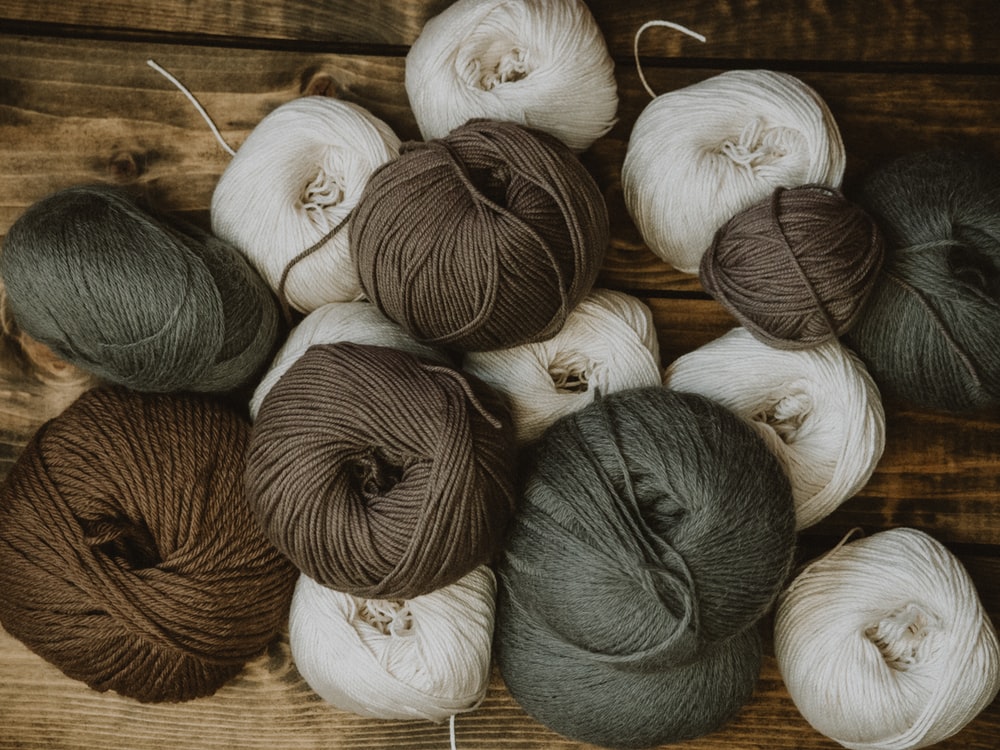
Pile Thickness for Dining Room: Striking the Balance Between Comfort and Durability
The pile of a rug refers to the thickness and length of its fibers. It can be either short or long, adding visual interest to your room. These can be made from various materials, including wool, silk, and cotton.
The pile height of an Oriental rug is an important consideration when selecting a rug for your dining room, as it can affect its durability, appearance, and maintenance.
While not very well-trafficked most of the time, dining rooms are usually filled with activities for your enjoyment. People move, chairs slide out of the tables, and food moves around.
Ultimately, the choice of pile height will depend on your personal preferences and needs. It’s essential to consider the rug’s aesthetic and practical aspects.
Choose a thicker pile rug if you prioritize durability and comfort. These rugs are more durable and can withstand the wear and tear of foot traffic and furniture movement. A thicker pile can help hide stains that may occur over time. This is especially important in a dining room, where spills and stains are more likely to occur. Thick pile rugs also provide added cushioning and comfort underfoot and are more forgiving when moving chairs around.
On the other hand, a thinner pile rug may be more suitable if you prefer a more low-maintenance option. A low-pile rug may be easier to clean and maintain but less comfortable to walk on. Also, it may not provide as much insulation or soundproofing as a thicker one, which can be important in the dining room.
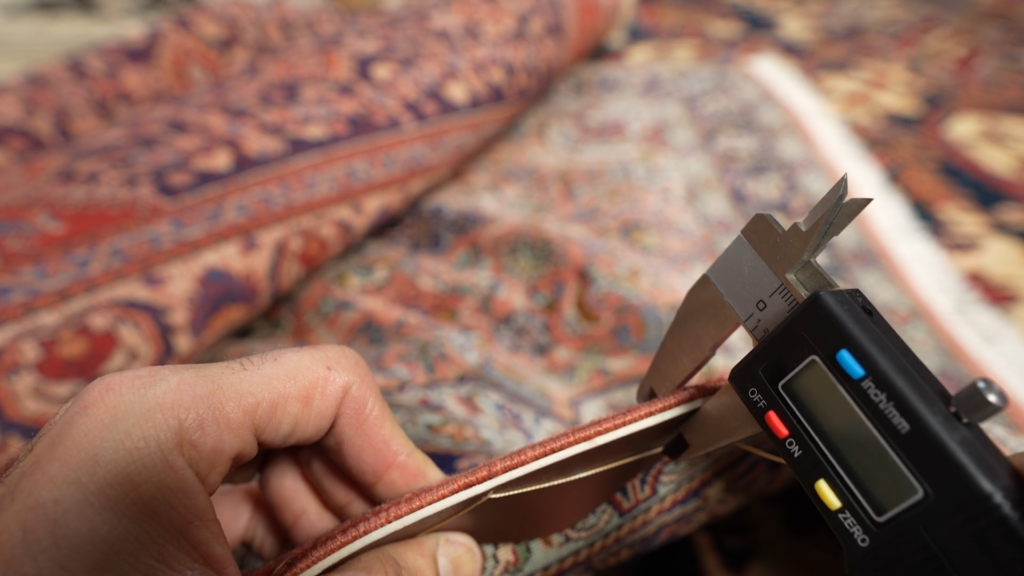
Persian Rug Design for Dining Room: Focusing on the Border
When selecting a design for your dining room Persian rug, it’s essential to consider the style of your room and personal preferences. However, it’s recommended to focus more on the border design of the rug as it is the most exposed part.
We suggest selecting a border design that captivates you, as you and anyone entering the room will notice it more than any other part of the rug.
Regarding the field design, which is the main body of the rug, you can choose any design you like, such as floral, geometrical, or medallion patterns. You can opt for a heavily patterned rug however, remember that the field design will be less visible than the border, so choosing a specific design for this area is not as crucial.
Persian Rug Colors: Choosing the Perfect Palette for Your Dining Room
When selecting a Persian rug for your dining room, consider color another important factor. All the large Persian or Oriental rugs on an open floor plan should complement one another. As discussed earlier, it is advisable to opt for darker colors like navy blue and deep red for the rug’s field because they effectively conceal stains and spills. This is especially crucial in a dining room where spills occur more frequently.
Natural fibers, like wool, cotton, and silk (found in a variety of our rugs), are the perfect playgrounds for a palette of vibrant colors. Light-colored Oriental rugs in the dining room can contribute to a bright, airy, and welcoming atmosphere. They can make the space appear larger and more open, particularly in smaller dining areas or rooms with limited natural light.
You can choose any color for the rug’s border since it is less prone to spills and stains. However, we recommend selecting a color that enhances your dining room’s color scheme. Consider the color of your dining table and chairs, and pick a border color that harmonizes well with these elements.
When choosing a color for your dining room Persian rug, it is vital to think about its function, how it will blend with the walls, and your room’s overall aesthetic.
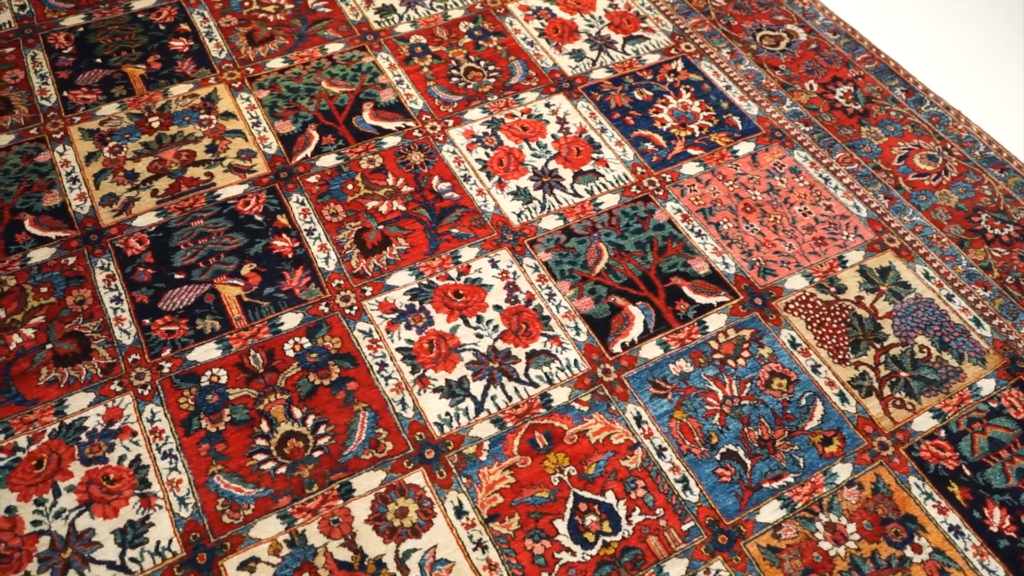
Tips for Protecting Your Dining Room Persian Rug
After investing in a beautiful Persian or Oriental rug for your dining room, you’ll want to ensure it stays in good condition for as long as possible. Here are some tips for protecting your dining room rug:
Use a rug pad: A rug pad underneath your rug provides extra cushioning and support and helps prevent the rug from sliding around on the floor. This is especially important in a dining room where dining chairs are being moved in and out frequently, as the rug pad will help keep the rug in place.
Clean up spills immediately: While wool is stain-resistant, accidents happen, especially in a dining room where food and drinks are consumed. When a spill occurs, cleaning it up immediately is important to prevent it from setting into the rug fibers. Use a clean cloth to blot up as much of the spill as possible, and then use a gentle cleaning solution to remove any remaining stain.
Use rug coasters: Place protective cups under the legs of dining chairs and tables to safeguard your Persian rug from spills and condensation. These cups will not only shield the rug from spills but also help distribute the weight of the furniture more evenly, reducing the chances of rug indentations and wear.
Rotate the rug: The fibers may wear down in high-traffic areas. To prevent this from happening, it’s a good idea to rotate the rug every few months. This will help distribute the wear more evenly and extend the rug’s life.
Vacuum regularly: Regular vacuuming is essential for keeping your rug looking its best. Use a vacuum with a rotating brush head to loosen any dirt and debris trapped in the fibers. Be sure to vacuum both the top and bottom of the rug and avoid using a vacuum with a beater bar as this can damage the rug.
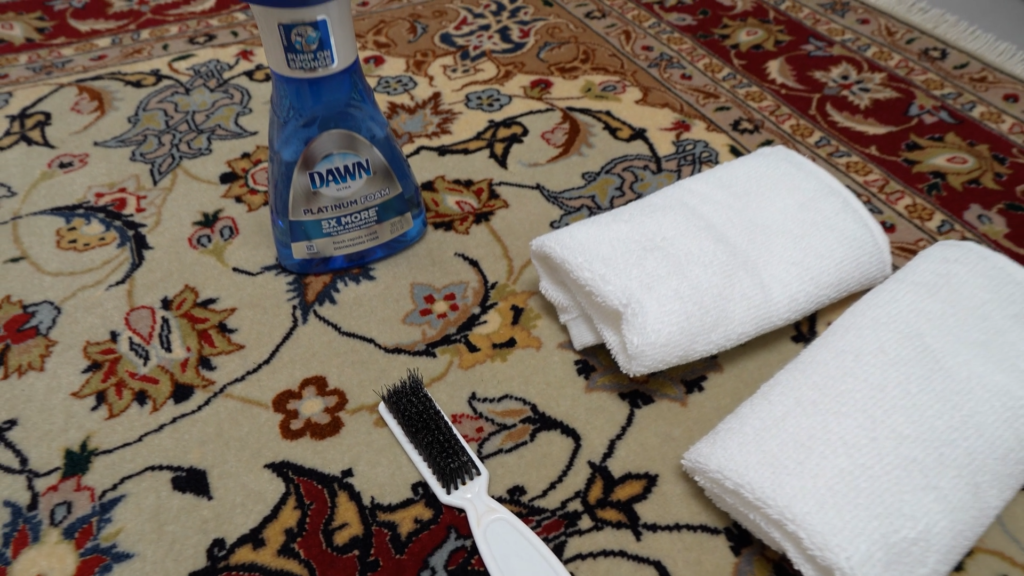
Which Type of Persian Rug is Best?
Investing in a top-notch Persian rug can enhance the look of your dining room. We recommend selecting a Persian or Oriental rug with a medium to thicker pile for your dining room. Tabriz, Kashan, Mashad, and Bakhtiari rugs are excellent options as they come in larger sizes.
If you prefer a rug with a thinner to the medium-sized pile, Sarouk rugs and Kashmar rugs are great choices. For Pakistan rugs, we suggest looking at Oushak and Kazak rugs.
Related Categories
Bedroom Rugs | Foyer and Entryway Rugs | Living Room Rugs | Kitchen Rugs | Hallway Rugs
